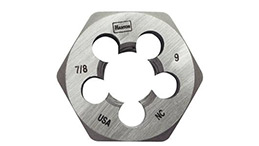
8 月 . 11, 2024 13:50
Back to list
Exploring the Benefits and Applications of Coalescing Filters in Fluid Filtration Systems
The Coalescing Filter An Essential Tool for Fluid and Gas Separation
In various industrial applications, effective separation of fluids and gases is crucial for operational efficiency and product quality. One of the most effective tools in achieving this is the coalescing filter. Coalescing filters are specialized devices designed to remove water and solid contaminants from liquid fuels and oils, as well as from compressed gases. By understanding how these filters function and their applications, industries can greatly enhance their processes and extend the lifespan of machinery.
How Coalescing Filters Work
The core principle behind a coalescing filter is the ability to collect and merge smaller droplets of liquid contamination into larger ones, known as coalescing. When a mixture of liquid and contaminants passes through the filter, the filter media captures the smaller droplets of water or particulates, allowing them to gather and grow. As these droplets coalesce, they become heavy enough to separate from the main liquid flow, settling at the bottom of the filter housing.
Typically, coalescing filters consist of multiple stages. The first stage often features a pre-filter that captures larger solid particles, while subsequent stages employ coalescing media that enhances the separation of fine droplets. The filtered clean fluid then exits the system, while the collected contaminants must be periodically drained to ensure optimal filter performance.
Applications of Coalescing Filters
Coalescing filters are widely used across various industries. In the oil and gas sector, they play a crucial role in removing water and particulates from crude oil and refined fuels before storage or distribution. This not only prevents corrosion and damage to equipment but also ensures compliance with industry standards for fuel quality.
coalescing filter

In the aerospace and automotive industries, coalescing filters are used in fuel systems to protect engines from harmful contaminants that could cause failures or inefficiencies. Similarly, in the food and beverage industry, these filters help to ensure that oils and liquids meet stringent safety and quality regulations by removing unwanted water and particulate matter.
In compressed air systems, coalescing filters protect pneumatic tools and equipment from moisture and debris. By maintaining the quality of compressed air, these filters help to minimize wear and tear on machinery and enhance performance.
Benefits of Coalescing Filters
The advantages of using coalescing filters are manifold. They enhance the overall quality of the end product by ensuring that harmful contaminants are effectively removed. This contributes to the longevity of equipment, reducing maintenance costs and minimizing downtime. Furthermore, by improving operational efficiency and product quality, businesses can enjoy competitive advantages in their respective markets.
Coalescing filters are also environmentally beneficial. By effectively removing contaminants, they reduce the risk of pollution from spills and leaks, aligning with sustainability goals and regulations enforced by various environmental agencies.
Conclusion
In summary, coalescing filters are vital components in various industrial processes, designed to enhance fluid and gas separation. Their ability to effectively remove water and particulate contaminants not only improves product quality but also extends the life of equipment, making them indispensable in sectors such as oil and gas, automotive, aerospace, and food processing. As industries continue to prioritize efficiency and sustainability, the importance of coalescing filters will undoubtedly grow, paving the way for advancements in filtration technology.
Latest news
-
Unlocking The Quality Gas Pressure ReducersNewsNov.01,2024
-
The Role of Gas Pressure Reducing StationsNewsNov.01,2024
-
The Importance and Functionality of Safety Relief ValvesNewsNov.01,2024
-
The Essential Role of Safety Valves in Natural Gas ApplicationsNewsNov.01,2024
-
The Essential Role of Gas Pressure RegulatorsNewsNov.01,2024
-
Enhance Your Premium Gas FiltersNewsNov.01,2024

